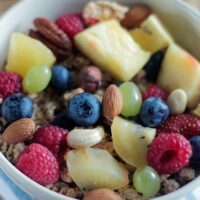Living Abundantly and Tips for Stress Eating
“What you stay focused on will grow.”—Roy T. Bennett
Today, I’m living with an intention of abundance.
Considering that what I stay focused on will grow, focusing on abundance, will bring about more…
…of everything!
This feeling leads to gratitude, which leads to generosity. This in turn leads me down the path of HOPE.
Know anybody who could use some hope? 
As I write this, I think that this could work in reverse, or even in one big cycle that keeps repeating. Hope…generosity…gratitude…abundance.
At any rate, having an intention for your day that is positive will bring about good things for you and all those around you.
Abundant living.
How many times have you cleaned out a drawer of clothes, only to discover a favorite item that got stashed beneath other clothes?
Or as you look in your freezer for something to make for dinner, you discover something else that is a fun surprise, like a box of your favorite cookies? (That is, if they made it to the freezer.)
Where in your life today would you like to feel abundance?
Focusing on all that we have helps us see that we have much to be grateful for.
Stress Eating
While the numbers vary, stress eating is a problem for lots of people. Some do it on a regular basis, and others have an occasional bout with it.
Whatever the case may be, here is a link to an article I wrote recently on ways to manage stress eating.
Tips to Help Manage Stress Eating
In addition to the article, here are some tips to try before you attack that package of gingerbread men or bag of chips.
(The following section first appeared in the January 19, 2022 issue of Get Healthy, a publication of The Northwest Indiana Times.)
Preparing for the next thing
Before you stress eat, pause, and try one or two other activities first. Each activity can take anywhere from about 1 to 15 minutes. Choose things that you enjoy and believe that you’ll actually do. What works to keep you away from your pantry or fridge one day may not work on another, depending on the stressor, your mood, the day. Be open to experimentation and be flexible. Here are a few ideas to get you started so that you can come up with your own list. Once you create your list, keep it handy for those stress emergencies. 
- Read a few pages of an engaging book
- Phone a friend
- Close your eyes, sit quietly, and breathe
- Play with your pet
- Go outside for some fresh air
- Do some stretches or push-ups
- Listen to your favorite music
- Write a brief note to someone who would love to hear from you
- Journal about what’s driving you to eat or about your happy place
- Sort through mail
- Vacuum a room or toss in a load of laundry
- Drink a glass of water
Wishing you an abundance of love,
Health Coach Carol
“Plant seeds of happiness, hope, success, and love; it will all come back to you in abundance. This is the law of nature.”– Steve Maraboli







